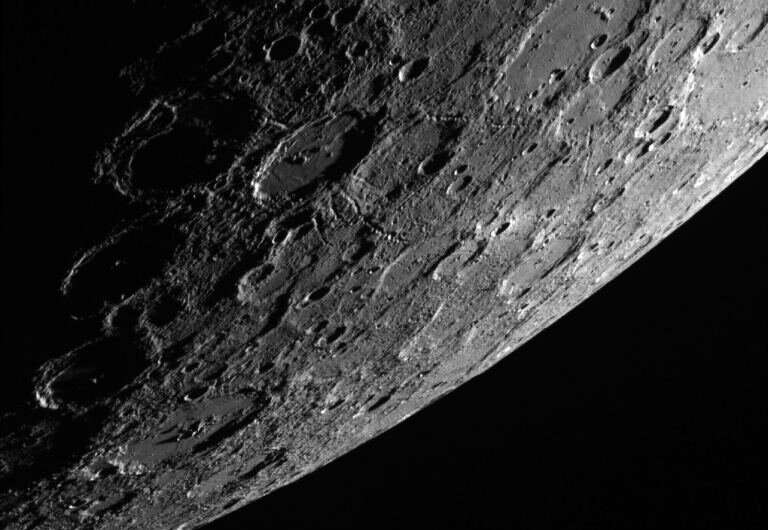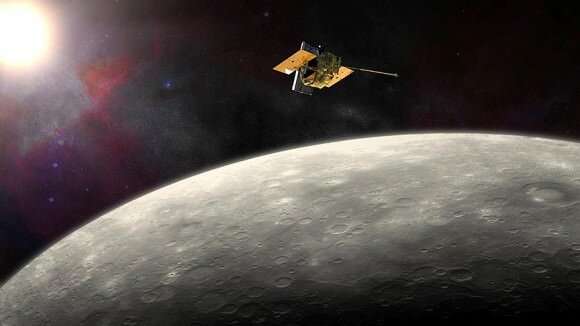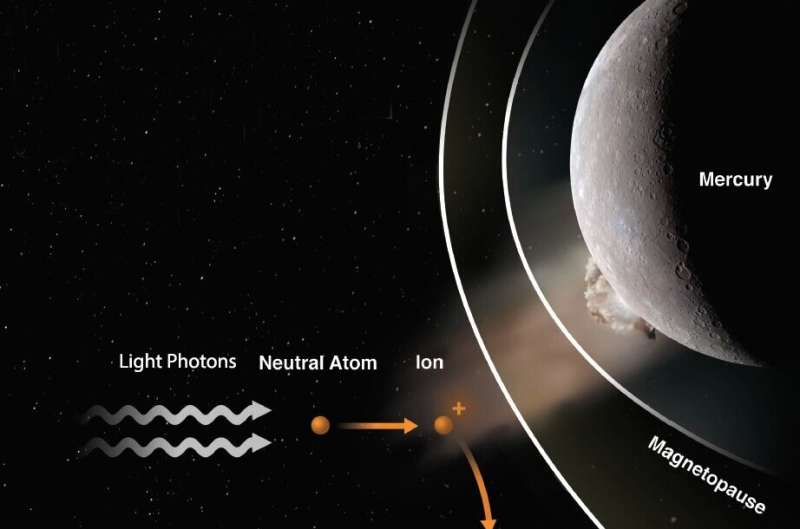But impacts as they happen on another rocky world have never been observed.
However, the MESSENGER (MErcury Surface, Space ENvironment, GEochemistry and Ranging) mission may have seen an impact take place back in 2013. In looking at archival data from the mission, scientists found evidence of a meteoroid impact on Mercury. While this data isn't a 'no-doubt' photo of the event, it does tell scientists more about impacts and how they affect Mercury's wispy-thin atmosphere.
"It's just incredible that MESSENGER could watch this happen," said Jamie Jasinski, a space physicist at the Jet Propulsion Laboratory, and the lead author on the study, published in Nature Commmunications. "This data plays a really important role in helping us understand how meteoroid impacts contribute material to Mercury's exosphere."
Mercury's tiny atmosphere, called an exosphere, has a pressure that's one-quadrillionth of that felt at sea level on Earth. The exosphere forms on Mercury's Sun-facing side from material originally on the planet's surface. Scientists think meteoroid impacts, in part, are responsible for putting such material into the exosphere.

The archival data revealed a strange anomaly: on December 21, 2013, MESSENGER's Fast Imaging Plasma Spectrometer (FIPS) saw an unusually large number of sodium and silicon ions blowing in the Sun's solar wind, the powerful charged gases that spew from the Sun. Oddly, these particles were traveling in a tight beam, nearly all in the same direction, and at the same speed.
Using the particles' speed and direction, the researchers "rewound the clock, tracking the particles' motion back to their source." They found the particles clustered in a dense plume, one that had erupted from Mercury's surface and extended nearly 3,300 miles into space.
They estimate the meteoroid was likely just a little over three feet long, which is relatively small. But computer models suggest something that size would create a plume with a height and density closely matching what FIPS detected.
Interestingly enough, before the MESSENGER mission, scientists expected the spacecraft would capture some impacts on Mercury—perhaps up to two impacts per year during its four years in orbit. But none were seen in images during the mission, which lasted from 2011 to 2015.

But in sifting through the old spectrometer data, the anomaly stood out.
"It just shows how rare it is to have the spacecraft at the right place and time to be able to measure something like this," said study co-author Leonardo Regoli, from Johns Hopkins Applied Physics Laboratory in Maryland—where MESSENGER was built and operated. "This was a special observation, and really cool to see the story come together."
Perhaps the European Space Agency's BepiColombo mission, which launched for Mercury in 2018 and will approach the planet in late 2025, will be able to capture more meteoroid impacts during its mission. Regoli noted that researchers will need to hone their models before using BepiColombo to make new observations, but the opportunity to see another Mercurian impact would be invaluable, he said.



